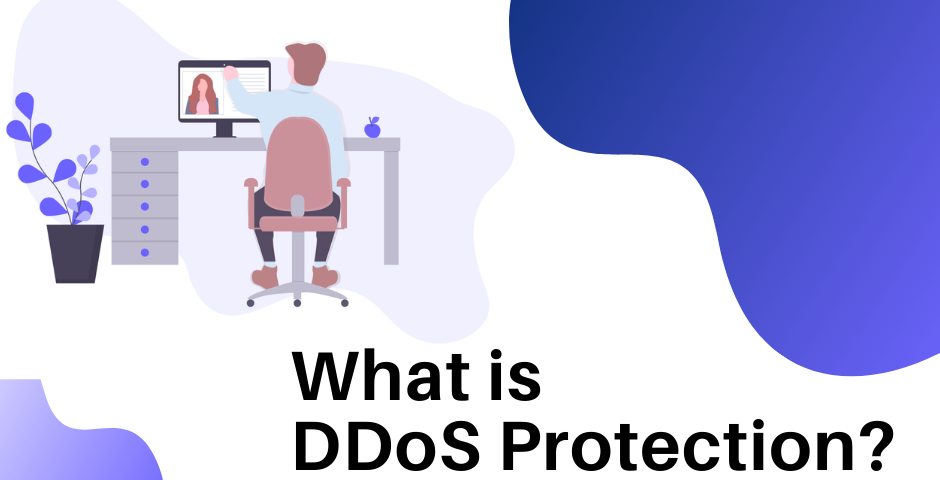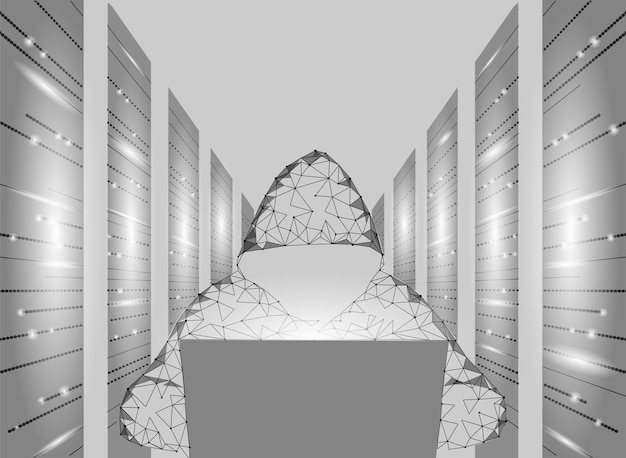What is DDoS Protection and How can it secure you against DDOS Attacks?

What is a DDoS attack?
A “denial-of-service” or DOS attack is used to assemblage the resources of a website so that it is difficult for users to get an approach to the website. The target of DOS attacks has been on several big businesses. Since a DOS attack from almost any place can be easily engineered, it can be extremely difficult to locate those responsibly.
A bit of history: In 1974, 13-year-old David Dennis carried out the first DOS attack. A DOS attack helps to hold the website resources to trouble users from approaching the site. Several large associations have been the victim of DOS attacks. Since a DOS attack can be programmed adequately from almost anywhere, finding the responsible person can be challenging.
The following article will guide you regarding the following aspects:
- Different kinds of DOS attacks
- Ways through which you can ensure the DDOS protection
- Various aspects related to DDOS that you might come across
- DDOS protection service providers
Kinds of DOS Attacks
In general, DOS attacks take one of two sorts. Either you are flooded or failing web services results

Flooding Attacks:
Lets first have a look at the most popular type of DoS attack is flooding. It is when the system is targeted that the server is unable to manage large quantities of traffic. Finally, the machine ends.
The ICMP flood also called a ping-flood is a kind of DoS assault that sends spoofed information packets that reach each machine in a target network and take advantage of malfunctioning networking devices.
An SYN flood is a variant that exploits the TCP link sequence weakness. The triple handshake relation between the host and the server is generally called this.
Back in 2018, a DDoS attack shattered existing records by flooding their target’s systems with data for 329 hours, or nearly 2 weeks.

Crash Attacks:
In addition to that, there are crash attacks that occur less often as cybercriminals communicate vulnerabilities that exploit weaknesses in the targeted device. The outcome? The system is failing. Crash attacks and flooding attacks prevent legal users of websites, gambling sites, emails, and banking accounts from accessing online services.
Working of DOS:
Unlike a virus or malware, a DoS attack does not rely on a special program to run. Instead, it takes advantage of the inherent weakness of the way computer networks interact. In a DoS attack, an appliance is equipped to send not only one “introduction” to an assistant, but hundreds or thousands of people.
The server which can not tell that the introductions are fake returns its normal answer, waiting for up to a minute in each case to hear a reply. If there is no response, the server shuts down the link, and the machine running the attack repeats, sending a new batch of fake requests.
DDOS Attack:
A DDoS attack is when several systems target a single DoS attack device. Distributed Denial of Service attacks threaten websites and online services. The aim is to flood them with more traffic than the server or the network can handle. The purpose is to make the website or service inoperable. The majority of DDoS attacks are launched from:
China (over 4.5 million in 2018)
USA (2.7 million)
Russia (1.5 million)
Italy (940,000)
South Korea (840,000)
India (500,000)
Germany (370,000)
Working of DDOS:

This is the fundamental concept that a DDoS is a cyberattack on a server, a facility, a website, or a network that overwhelms Internet traffic. If the traffic overwhelms the target, the server, facility, website, or network will be made inoperative.
A DDoS attack can almost be intended as a “smokescreen” that diverts the attention of your workers when another attack, including data theft, is taking place. This emphasizes the value of defending against DDoS attacks at all costs and taking the necessary protection measures to prevent catastrophic financial losses.
Now let’s discuss how you can safeguard your site.
What is DDoS Protection?:
Owing to the high profile nature of DDoS attacks and their potentially catastrophic effects, several security vendors have suddenly started providing DDoS defence solutions. With so much depending on your decision, it’s important to consider the strengths and disadvantages of your choices.
DDoS protection and mitigation attributes to the method of successfully preserving a targeted assistant or network from a Distributed Denial of Service ( DDoS) attack. Through using specially built network equipment or cloud-based security services, the targeted victim can minimize the incoming attack.
The first thing to do in DDoS mitigation is to define normal conditions for network traffic by identifying “traffic patterns” that are important for the identification and alerting of threats. DDoS mitigation also involves distinguishing incoming traffic to separate human traffic from human-like bots and hacked web browsers. The method is accomplished by comparing signatures and analyzing various traffic attributes, including IP addresses, cookie variants, HTTP headers, and JavaScript footprints.
After identification, the next step will be filtered. Filtering can be achieved by anti-DDoS technologies such as link monitoring, IP reputation lists, deep packet inspection, blacklisting / whitelisting, or rate restriction. One technique is to transfer network traffic across high-capacity networks with “traffic scrubbing” filters to a potential destination network.
Here a question is raised: how to enable DDOS Protection?
When the name of the constructive network occurs in the search results, take it. Select DDoS protection, under SETTINGS. Select Standard. Under DDoS protection an existing DDoS protection plan, or the plan you created in step 1, and then select Save.

Here are some more methods to prevent DDOS attacks:
Deploy firewalls to assault sophisticated applications
A good practice is to use a Web Application Firewall ( WAF) against attacks, such as SQL injection or cross-site forgery, that attempt to exploit the vulnerability of your application itself. Besides, due to the peculiar nature of these attacks, you should be able to easily create personalized mitigations against unlawful requests that may have features such as disguising traffic as good or coming from bad IPs, unpredictable geographies, etc. Often it can also be useful to mitigate attacks, as it happens to have encountered support for observing traffic trends and building personalized defences.
The Size Strategy:
Bandwidth (or transit) capability and server capacity to handle and mitigate attacks are two main considerations for the mitigation of large-scale volumetric DDoS attacks. Transit capability. When designing your applications, make sure that your hosting company has enough redundant Internet access that enables you to manage large amounts of traffic.
Since the ultimate aim of DDoS attacks is to impact the availability of your resources/applications, you should place them not only close to your end-users but also to large Internet exchanges that will make it easier for your users to access your application even during high traffic volumes.
Also, web applications will take a step further by using Content Delivery Networks (CDNs) and smart DNS resolution services that offer an additional layer of network infrastructure to support content and address DNS queries from locations that are often closer to the end-users.
Reduce the area of attack:
One of the first strategies to mitigate DDoS attacks is to reduce the surface area that can be used, thus restraining the option of attackers and granting defences to be built in one location.. We want to ensure that we do not expose our application or services to ports, protocols, or applications from which no contact is required. Thus, decreasing the potential points of attack and enabling us to focus our mitigation efforts
. In certain cases, you can do this by putting your computing resources behind Content Delivery Networks (CDNs) or Load Balancers and by limiting direct Internet traffic to certain areas of your infrastructure, such as your database servers. In other instances, you can use firewalls or Access Control Lists ( ACLs) to control the traffic in your applications.
Modify the Home Network:
You should be up to date and safe if your network hardware is supported by your ISP. But it’s time to update if you’ve acquired your external modem or router, or if you have more than four years’ hardware from your ISP.
Some routers and hardware firewalls have built-in DDoS protections and other network intrusions. They can block hefty network traffic explosions automatically, especially if they come from several sources, which may imply the inaction of a DDoS botnet. A “blacklist,” which blocks incoming connections from known botnet IP addresses, is another feature.
Advanced network protection will often affect the Internet use and playback such that hardware updates are viewed as a last resort unless you are substantially out of date.
Using a private virtual network:
A virtual private network ( VPN) simply hides behind a virtual wall your IP address. In the VPN, you will route the entire internet traffic to the network of the provider before you reach the open internet. Your IP is a VPN Domain for desired assailants and their Domain detection devices. DDoS traffic will first be shown at the servers of your VPN, before reaching your home network.

The downside of a VPN is that it relies on the procedures of the provider to secure your IP while inserting a new ‘jump’ on your network path will lead to latency and higher ping times. To avoid these problems, look for a VPN provider with low-latency game connections that can ensure your IP remains secure.
How to setup DDoS Protection?
The following steps describe how BLOCKDOS PROTECTION PROCESS against DDOS – Distributed Denial of Service works:
– Client is asked to provide a Domain Name and IP address of their server
– We at BLOCKDOS do the set-up on our cluster and provide a proxy Ip to the client
– We will provide a list of IPs to the client to be whitelisted at the firewall
– Client will make DNS changes to point the domain to our proxy IP
– All traffic will start coming to our protected proxies
– Attack traffic will be filtered by us and bad traffic will be discarded or added to a temporary block list
– Good clean traffic will be sent to the client-server to access the website
In order to have a detailed understanding, let’s analyze different questions that might pop up in your mind while tackling this issue.
- What is a distributed denial-of-service attack?
A DDoS attack is a malicious attempt at disrupting a targeted server, service, or network’s usual traffic through a flood at Internet traffic to the target and surrounding infrastructure.
- What is the goal of a DDOS attack?
A DDoS attack is a malicious attempt to interrupt the normal traffic of a targeted server, service, or network through a flood of Internet traffic to the target and surrounding infrastructure.
The website can become slow to respond to legitimate requests. Moreover, the website could be disabled, making it difficult for legitimate users to access it.
- What are the types of DDOS attacks?
Here is a list of the most common forms of DDoS attacks that can prove to be harmful for you:
- SYN Flood
- UDP Flood
- HTTP Flood
- Ping of Death
- Smurf Attack
- Fraggle Attack
- Slowloris
- Application Level Attacks
- NTP Amplification
- Advanced Persistent DoS (APDoS).
- Zero-day DDoS Attacks.
DDoS Protection, is it possible?
People often ask us – IS DDOS Protection Possible?
In this video, we are going to tell you what it takes to run a secure business online. It’s easy! First, never think a DDoS attack can’t hit you; you can be the next target! Second, be proactive and show interest in keeping your networks foolproof and cybersecurity. Third, do a contract with a reliable DDoS protection service provider who can do a complete analysis to eliminate your web insecurities and pro-actively protect your website and networks.
For more frequently asked questions videos about DDOS
Visit our video channel at https://www.youtube.com/user/blockdosnet
If you have any questions feel free to write to us at info@blockdos.net
Visit our website: https://www.blockdos.net/
What are some of the best service providers for DDOS protection?
Here is the best service provider for DDOS protection:
- SolarWinds Security Event Manager (FREE TRIAL)
- Sucuri Website Firewall
- StackPath Web Application Firewall (FREE TRIAL)
- Link11.
- Cloudflare.
- AWS Shield.
- Akamai Prolexic Routed.
- AppTrana.
Where can I find the best DDOS protection service, the provider?
Here are some best DDOS protection service providers explained below:
-
Akamai DDoS mitigation:
Akamai’s DDoS mitigation solution includes CDN-based, DDoS-based, and DNS-based modules, depending on customer requirements. Akamai mitigates DNS-based DDoS attacks (e.g., DNS amplification), as well as protecting DNS services from DDoS attacks. It includes automatic rate controls, custom web application firewall (WAF) laws, monitoring software, traffic profiles, and workflows that prevent unwanted mitigation behaviour.
-
Verisign DDoS Protection Services
When Verisign monitors detect a DDoS threat, support staff shall immediately alert customers and prescribe a mitigation strategy. In addition to reporting, the organization provides on-demand mitigation measures. It also has an OpenHybrid API that enables organizations to use their existing security systems to send threat information to Verisign’s cloud-based service for possible mitigation
-
BlockDos DDoS Protection:
Blockdos DDoS safety solutions and web application security solutions have integrated application and network security. Its Attack Mitigation Solution is a hybrid DDoS defence solution that combines on-going detection and mitigation with cloud-based volumetric DDoS attack prevention, scrubbing, and 24×7 cyberattack and DDoS surveillance.
-
Cloudflare DDoS Protection:
Cloudflare’s cloud-based DDoS protection system can deal with layer 7 attacks as well as layer 3 and layer 4 attacks. Instead of using dedicated anti-DDoS hardware, every machine in its global network takes part in DDoS mitigation. It has over 15 Tbps of capacity.
-
Arbor Networks APS:
Networks utilize hybrid, multi-layer defences to protect against all types of DDoS threats. On-premises protection is delivered by Arbor’s APS, which addresses application-layer and TCP state-exhaustion attacks. It incorporates detection and mitigation technology for fast, automatic blocking of attacks.
-
Nexusguard:
Nexusguard ‘s approach mitigates all sorts of DDoS attacks and cyber threats. This includes security from Level 3 to Level 7 attacks, including DDoS attacks, brute force, link floods, ping of death, Smurf, SSL floods, zero-day attacks, and more.
-
DOSarrest DDoS Protection:
DOSarrest focuses on HTTP / HTTPs and defends TCP ports 80 and 443 from websites, APIs, and mobile application servers. It provides cloud-based security that includes DDoS protection, a web firewall program, a CDN for improved performance, website monitoring, and support. All of them are combined using its big data analytics engine.
-
F5 DDoS Protection:
F5 defends against DDoS traffic targeting clouds, networks, and applications, as well as DNS attacks. Network layers 3-7 can be tested. F5’s DDoS Hybrid Defender tackles mixed network threats and sophisticated device threats while allowing SSL decryption, anti-bot functionality, and advanced detection.
-
Neustar SiteProtect NG:
Neustar can put counter-measures in place to restrict visibility, protect the uptime of the web, and provide automated mitigation through multiple attack vectors
-
Imperva Incapsula:
Imperva Incapsula takes a multi-tier approach to block DDoS traffic. It filters traffic through a web application firewall, a DDoS rules engine, and a series of progressive challenges that are invisible to legitimate traffic.
Conclusion
Hoping the information provided above in the article would give you a sufficient idea regarding how you can keep your DDOS protection up to the mark, and keep yourself secure against these kinds of attacks.
Frequently Ask Questions:
1- What is DDoS Protection?
DDOS Protection is to mitigate all sort of DDoS attacks using a set of techniques and tools with specific countermeasures to stop DDoS attacks.
2-Who is responsible for DDoS attacks?
The motivations behind a DDoS attack may be political, vengeance, business interests, criminality, or even activism, prompting many to blame governments, terrorist organizations, disgruntled workers, and often thrill-seeking lone hackers, or anyone who is interested in your business activities.
3-What is Ddos and how dangerous it is?
A distributed denial-of-service (DDoS) attack is an attack by various entities aiming for one target. This attack usually happens with hijacked internet devices to attack at a larger scale. Many people believe that a DDoS attack isn’t a big deal because it’s not about stealing data or gaining unauthorized device access. DDoS attacks are often over in a matter of minutes or hours. The worst ones can sometimes last a few days. Because of the apparently restricted nature of their reach and timeline, it is easy for managers to assume that DDoS attacks are not a cause for concern. This is a common blunder. DDoS attacks can do substantial harm to your company’s competitiveness, uptime, and credibility even though they do not steal something or carry out a lengthy offensive.
4-How is a DOS attack performed?
A Denial-of-Service (DoS) attack is one that attempts to bring a system or network to a halt, rendering it unavailable to its intended users. DoS attacks do this by overwhelming the target with traffic or giving it information that causes it to crash. The most popular form of DoS attack is a buffer overflow.
5- Does changing your IP stop DDOS?
When a full-scale DDoS attack is in progress, changing the server IP and DNS name will halt the attack. However, if the attacker is on the lookout, they can begin sending traffic to your new IP address as well. If changing the IP address fails, you can contact your internet service provider (ISP) and request that the malicious traffic be blocked or rerouted.
